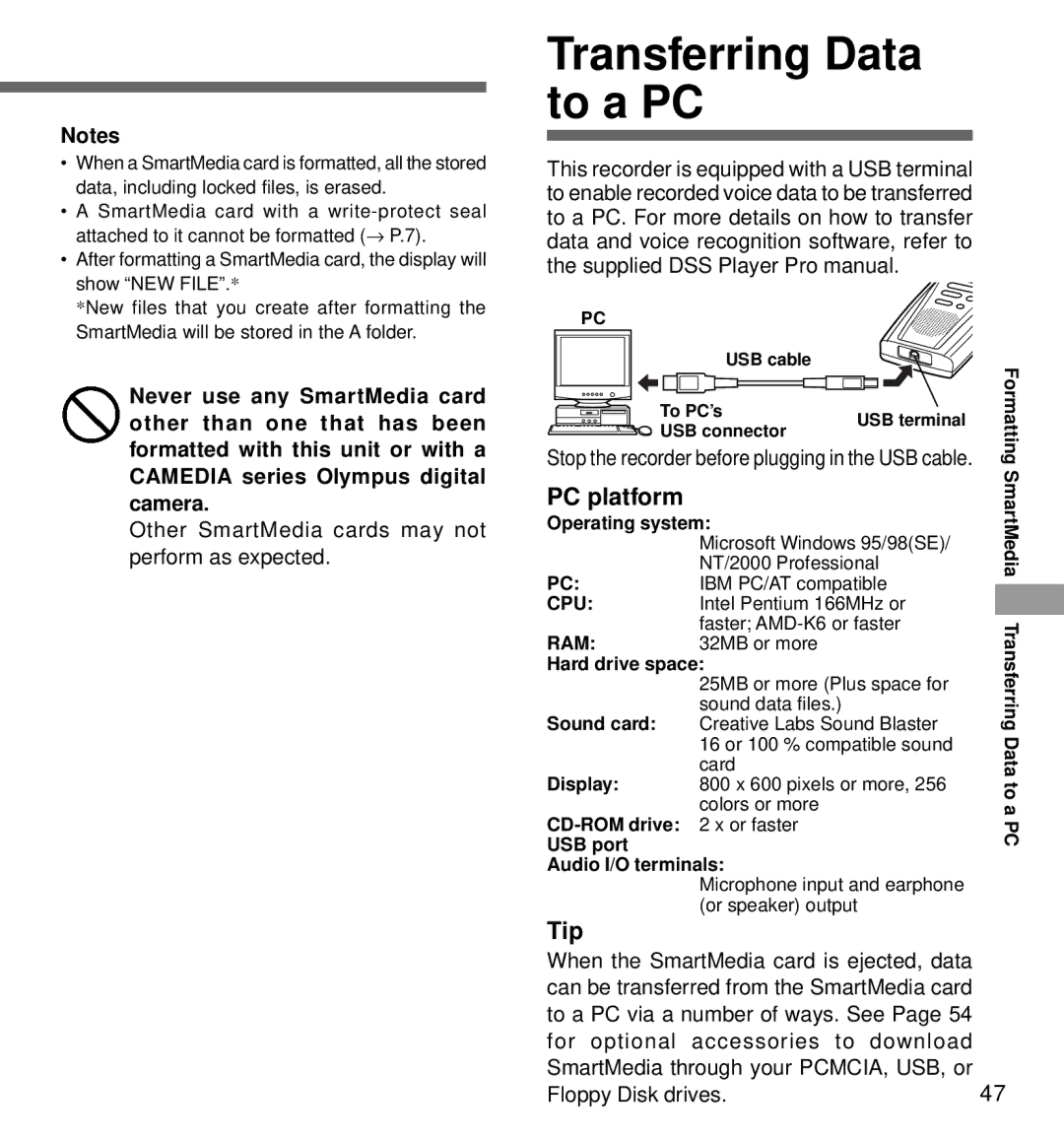
Notes
•When a SmartMedia card is formatted, all the stored data, including locked files, is erased.
•A SmartMedia card with a
•After formatting a SmartMedia card, the display will show “NEW FILE”.*
*New files that you create after formatting the SmartMedia will be stored in the A folder.
Never use any SmartMedia card other than one that has been formatted with this unit or with a CAMEDIA series Olympus digital camera.
Other SmartMedia cards may not perform as expected.
Transferring Data to a PC
This recorder is equipped with a USB terminal to enable recorded voice data to be transferred to a PC. For more details on how to transfer data and voice recognition software, refer to the supplied DSS Player Pro manual.
PC |
|
|
|
| USB cable |
| Formatting |
Stop the recorder before plugging in the USB cable. | |||
To PC’s | USB terminal |
| |
USB connector |
| SmartMedia | |
PC platform |
|
| |
|
|
| |
Operating system: |
|
| |
| Microsoft Windows 95/98(SE)/ |
| |
PC: | NT/2000 Professional |
| |
IBM PC/AT compatible |
| ||
CPU: | Intel Pentium 166MHz or |
| |
Sound card: | faster; | Transferring | |
Creative Labs Sound Blaster | |||
RAM: | 32MB or more |
|
|
Hard drive space: |
|
| |
| 25MB or more (Plus space for |
| |
| sound data files.) |
| Data |
| card |
| |
| 16 or 100 % compatible sound |
| |
Display: | 800 x 600 pixels or more, 256 | to a | |
colors or more |
| ||
2 x or faster |
| PC | |
USB port |
|
| |
|
|
| |
Audio I/O terminals: |
|
| |
| Microphone input and earphone |
| |
| (or speaker) output |
| |
Tip |
|
|
|
When the SmartMedia card is ejected, data |
| ||
can be transferred from the SmartMedia card |
| ||
to a PC via a number of ways. See Page 54 |
| ||
for optional accessories to download |
| ||
SmartMedia through your PCMCIA, USB, or | 47 | ||
Floppy Disk drives. |
| ||
